GardenerHeaven.com is reader-supported. When you buy through links on our site, we may earn an affiliate commission.
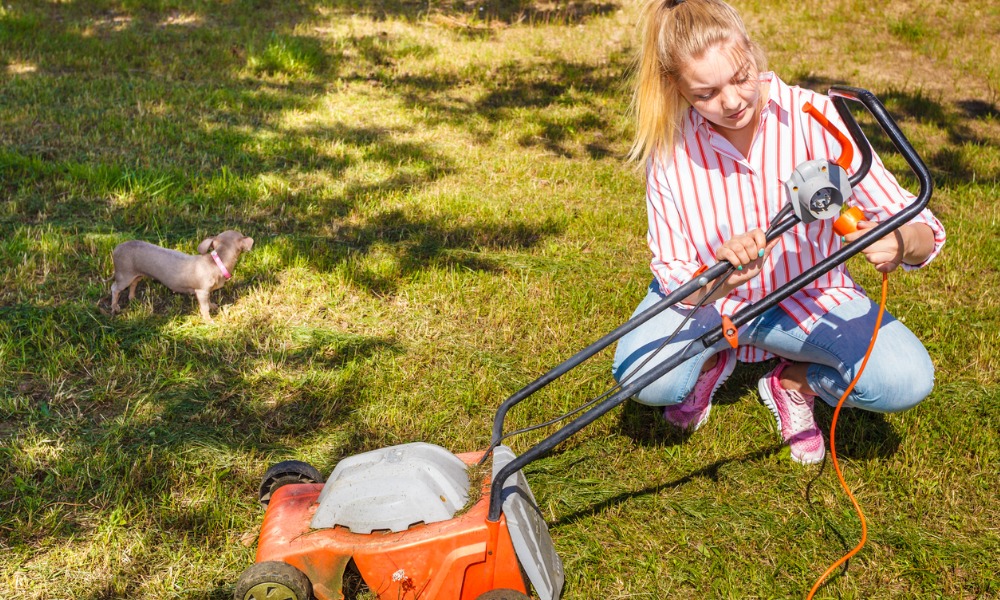
A well-functioning lawn mower engine is key to maintaining a healthy and vibrant yard. In this section, we will explore the importance of properly operating and maintaining lawn mower engines and the potential issues that can arise from improper usage and maintenance. Discover the essential tips and fixes to ensure a smooth and efficient lawn mower operation, helping you easily achieve a neatly trimmed lawn.
Importance of properly operating and maintaining lawn mower engines
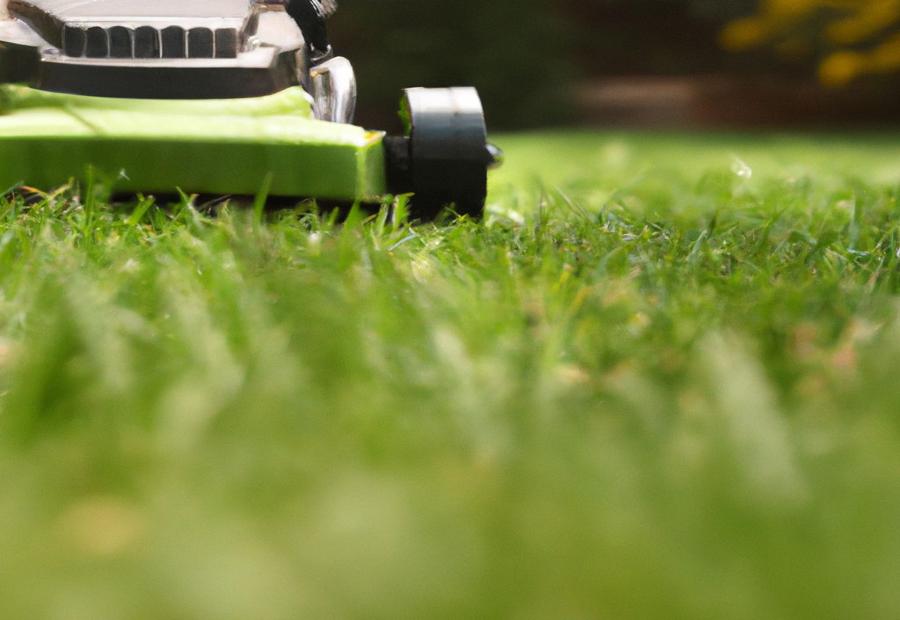
Photo Credits: Gardenerheaven.Com by Frank Wright
Properly operating and maintaining lawn mower engines is essential. Neglecting it can lead to various issues, like sputtering. This occurs due to fuel quality, clogged air, fuel filters, faulty spark plugs, or ignition system. It affects the smooth operation, power, and cutting ability.
To prevent these issues, you should:
- Check the fuel quality and mixture.
- Clean air and fuel filters.
- Inspect spark plugs and ignition system.
- Examine carburetor and fuel lines for blockages or damage.
Prevention tips are crucial. You should:
- Select and store fuel properly.
- Check oil levels and change them when required.
- Clean blades.
- Adhere to local maintenance requirements for safety.
If troubleshooting efforts don’t help, consult a professional. They have expertise in complex issues and can provide effective solutions. They also help prevent future problems by addressing underlying causes.
Potential issues caused by improper usage and maintenance
Improper care of lawn mower engines can lead to a range of issues. These come from not doing regular maintenance, using the wrong fuel or oil, and not fixing problems fast. A common issue is reduced engine performance due to clogged filters or spark plug fouling. This can make the engine run unevenly and use more fuel. A bad fuel mixture or no lubrication can cause damage to the carburetor or valves. Plus, there can be higher emissions and pollution.
To avoid these issues, follow these steps:
- Check and replace air and fuel filters for good air-to-fuel ratio.
- Inspect the spark plug and ignition system.
- Check the carburetor and fuel lines for wear or clogs.
- Make sure the fuel is right for the mower model. Store fuel away from heat.
- Check oil levels and change them when needed.
- Clean the blades.
- Ensure proper airflow around the engine.
- Follow local mower operation rules.
If sputtering persists or gets worse, get professional maintenance and repair. They can diagnose and fix complex issues. They can advise on preventive measures and regular maintenance. This will keep the lawn mower running well for years.
Understanding Lawn Mower Sputtering

Photo Credits: Gardenerheaven.Com by Christopher Jones
When it comes to understanding lawn mower sputtering, we need to delve into the causes and effects of this issue. By uncovering what triggers the sputtering and its impact on the mower’s performance, we can find the right solutions for smooth operation. From fuel system problems to spark plug issues, we’ll explore the common culprits behind lawn mower sputtering and how it can affect the overall performance of your machine.
Causes of lawn mower sputtering
Sputtering is an issue that lawn mower engines can experience. It can be attributed to fuel quality and mixture. Old or contaminated fuel can lead to poor combustion and result in sputtering. An improper fuel-to-air ratio can also cause this.
Therefore, it’s important to use the correct type and quality of fuel. Also, maintain the right fuel-to-air ratio for optimal performance.
Dirty or clogged air or fuel filters can result in sputtering. These need to be cleaned regularly. Faulty spark plugs or ignition systems can cause inconsistent sparking. This can lead to sputtering. So, check and replace spark plugs. Inspect ignition system components too.
A malfunctioning carburetor or blocked fuel lines can impede the proper flow of fuel into the engine. This can cause sputtering. Check the carburetor and fuel lines for obstructions and malfunctions.
It’s worth noting that there may be other factors causing sputtering. But, addressing these common causes can resolve or prevent many instances.
Effects of sputtering on lawn mower performance
Sputtering can affect a lawn mower’s performance. It decreases engine power and efficiency, resulting in inconsistent speed. This makes it harder to mow the lawn properly.
Moreover, sputtering can cause uneven cuts. The blades rotate at irregular speeds, leading to patches of long grass.
It can also cause higher fuel consumption. The engine is not running optimally, increasing operational costs.
Plus, prolonged sputtering can damage the engine’s parts. Stress on internal components leads to wear and tear. This can result in costly repairs or engine failure.
Overall, it’s important to address sputtering issues. This helps avoid negative effects and maintain a neat lawn.
Fixing a sputtering lawn mower: it’s a comedy show that your neighbors will appreciate – even if the grass doesn’t.
Troubleshooting Common Issues
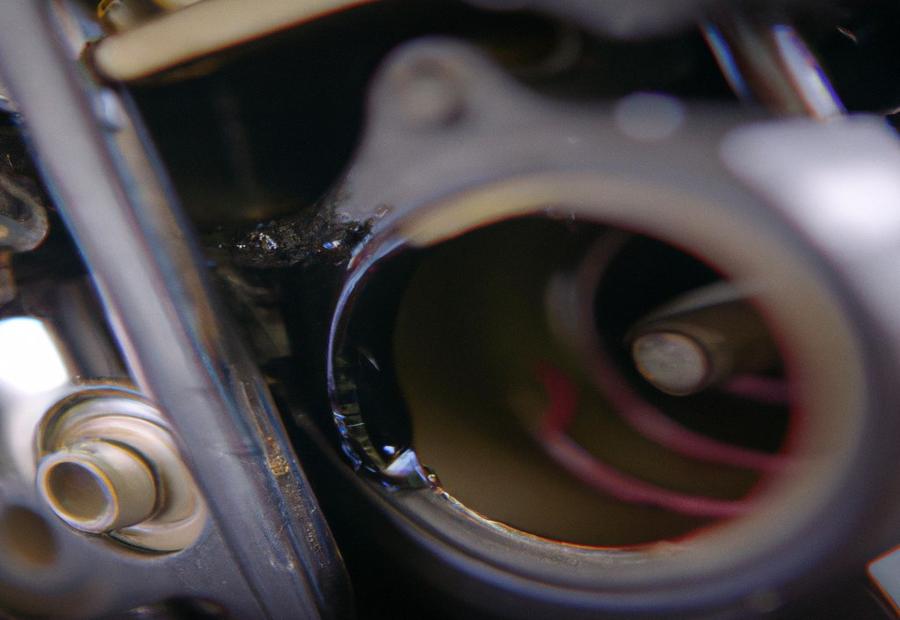
Photo Credits: Gardenerheaven.Com by Harold Carter
If your lawn mower is giving you trouble, don’t despair! This section investigates common issues that can cause lawnmowers to sputter and underperform. From checking fuel quality and mixture to inspecting filters and the ignition system, we’ll explore the key steps to fix these problems. Whether it’s a clogged carburetor or other potential issues, we’ve got you covered to restore smooth operation and keep your lawn looking its best.
Checking fuel quality and mixture
Inspecting fuel quality and mixture correctly is necessary for keeping lawn mower engines running smoothly. Overlooking this can cause issues that could hurt the machine’s performance. To make sure you do it right, follow these three steps:
- Check fuel: Look at the fuel in the mower’s tank. See if there’s any water or sediment. Contaminated fuel can clog the engine and lead to sputtering.
- Mix fuel properly: Most mowers need a specific ratio of gasoline to oil. According to manufacturer guidelines, use a measuring container to get the correct oil and gasoline.
- Clean or replace the filter: The fuel filter keeps out impurities. Look at it and clean it if you need to. Replace it if it’s worn out or broken.
Also, remember that old or stale fuel can also cause sputtering. So, regularly controlling fuel quality and mixture is important to keep the engine running well and avoid problems.
Cleaning air and fuel filters: Fresh air and clean fuel – your lawn mower needs it!
Inspecting and cleaning air and fuel filters
Maintain optimal lawn mower performance and prevent sputtering issues with proper air and fuel filter inspection and cleaning.
Here are the steps to follow:
- Locate the air filter housing near the carburetor or engine intake and remove securing screws or clips.
- Carefully remove the old air filter and inspect it for dirt, debris, tears, or clogs. Replace if necessary.
- Tap the filter gently or use compressed air to remove loose dirt or debris.
- Check the fuel filter along the fuel line between the tank and carburetor for blockage or clogging.
- Disconnect and inspect the filter at both ends of the fuel line.
- Clean out any debris inside the housing and along the fuel line.
Regularly inspect and clean these filters to keep your lawn mower running smoothly – don’t underestimate the importance of this task!
Consult the user manual for specific instructions unique to your model. Don’t let your spark plug and ignition system ruin your grass-cutting dreams with a fiery nightmare.
Checking spark plug and ignition system
It’s essential to check the spark plug and ignition system to keep your lawn mower engine running properly. Inspect these components regularly to stop sputtering and poor performance. This ensures your mower runs smoothly and efficiently. Here’s how:
- First, remove the spark plug wire from the spark plug on the side of the engine. This stops it from accidentally starting.
- Use a spark plug socket wrench to take out the spark plug. Check for cracks or too much carbon buildup. Replace it if needed.
- Clean the spark plug with a wire brush and check the electrode and center contact gap. Adjust it according to your mower’s specs.
- Examine the ignition system components, such as the ignition coil and flywheel magnets. Look for signs of damage or wear that may affect the spark. Replace or repair them if needed.
- Reinstall the spark plug and reconnect the spark plug wire. Double-check all connections before starting the mower again.
Also, check the spark plug and ignition system with other troubleshooting steps. Cleaning and inspecting these parts regularly will help avoid future issues and lengthen your lawn mower engine’s life. Don’t forget the carburetor and fuel lines, where blockages can turn your mower into a fuel-guzzling paperweight.
Examining carburetor and fuel lines
Inspecting and maintaining a lawn mower’s carburetor and fuel lines is vital. Neglect can lead to various issues, hindering its smooth operation.
Checking the carburetor: This part mixes air and fuel for combustion. It can get clogged with dirt, debris, or stale fuel residue, causing sputtering or poor acceleration.
Inspecting fuel lines: They carry gasoline from the tank to the carburetor. If cracked, brittle, or loose, they can cause fuel leakage, inadequate fuel supply, sputtering, or stalling.
Cleaning them: If any blockages or impurities are found, clean them using appropriate tools and techniques. This ensures proper fuel flow and prevents sputtering.
Adjusting settings: Sputtering issues may be due to incorrect carburetor settings. Per manufacturer recommendations, adjust the idle speed, air-fuel mixture ratio, etc.
By regularly examining and maintaining these components, you can identify potential problems early and take corrective measures before they escalate. This will help with a smooth operation and minimize sputtering issues.
Addressing other potential issues
Lawnmowers can suffer from various issues. These can be due to lack of maintenance, wear, and tear, or other unknown causes. To ensure your engine works well, it is essential to identify and address potential problems.
One of these might be a faulty throttle control. This regulates the engine speed and can lead to bad performance or stalling. Inspecting and adjusting the control mechanism should fix this.
Clogged-up fuel lines are another concern. Debris can accumulate in the line over time and block fuel flow. This will result in poor performance or trouble starting. Regularly inspect and clean the fuel lines to prevent this.
Worn-out or broken belts can also cause issues. Belts transfer power from the engine to components like blades. Worn belts can significantly reduce power or cutting efficiency. So, inspect and replace worn belts for optimal performance.
Electrical problems can also affect lawnmowers. Loose connections, corroded wires, or faulty switches can disrupt the electrical system. This can cause starting difficulties or intermittent operation. Check all electrical components and repair any damaged wiring or connections.
In summary, identifying and addressing all potential issues is key to keeping your lawn mower running well. You can ensure optimal performance and long life by taking care of it and regularly inspecting and maintaining it.
Prevention and Maintenance Tips
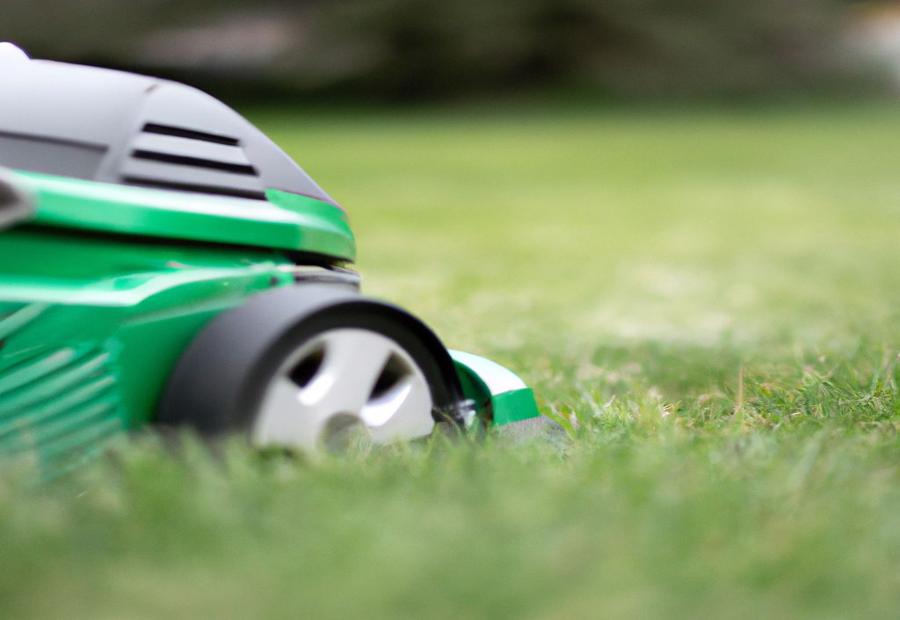
Photo Credits: Gardenerheaven.Com by Logan Rodriguez
To keep your lawn mower running smoothly, this section covers prevention and maintenance tips that you should follow. From proper fuel selection and storage to regular oil level checks and changes, cleaning and sharpening the mower’s blades, ensuring proper airflow and ventilation, and following local requirements and guidelines, these tips will help you avoid sputtering and ensure efficient operation. So, let’s dive into these essential maintenance practices and keep your lawn mower in top condition.
Proper fuel selection and storage
- Select the right fuel – Check the manufacturer’s recommendations or user manual to determine whether your mower requires gasoline or a specific type of fuel mix.
- Use fresh fuel – Buy gas within 30 days & store it in an airtight container to prevent oxidation.
- Avoid ethanol-based fuels – Opt for ethanol-free gasoline to prevent potential damage or system clogs.
- Store fuel properly – Keep it in a well-ventilated area away from open flames or heat sources. Use approved containers to store flammable liquids, ensuring they are tightly sealed.
- Dispose of old/contaminated fuel – If contaminated, dispose of it & refill with fresh gas.
Regular maintenance: Check the condition & level of oil regularly.
Regular oil level checks and changes
Monitoring and replacing oil regularly is essential for a lawn mower engine’s optimal operation and longevity. Neglecting this can cause issues that affect performance and trustworthiness. Here’s a
6-step guide to follow:
- Let the engine cool.
- Find the dipstick close to the base.
- Take out the dipstick and wipe it.
- Put the dipstick back in and take it out again to check the oil level.
- Markings will show whether the level is low, high, or right.
- Add or remove oil to get to the recommended level.
Doing this regularly, you can maintain good oil levels and avoid damage. Remember: check the owner’s manual for manufacturer-specific instructions. And wear gloves when handling oil to protect your skin. According to lawnmowerhut.com, if oil levels aren’t proper, it can cause accelerated wear and tear of internal components due to increased friction between moving parts.
Cleaning and sharpening the mower’s blades
Regularly clean and sharpen your mower’s blades to prevent grass clumping, improve cutting efficiency, and prolong the life of your lawn mower. Doing this maintenance task at least once a mowing season or when you observe a reduction in cutting performance is recommended.
Ensure your mower’s blades are clean and sharp for smoother operation and a well-maintained lawn.
Take caution! Improper cleaning and sharpening can harm the blades or upset their balance. Therefore, follow manufacturer guidelines or find expert help if you are inexperienced. Prioritize safety by disconnecting spark plugs or batteries before working on the blades. These precautions guarantee your lawn mower’s good performance and lifespan.
Ensuring proper airflow and ventilation
Airflow and ventilation are key for the great running of lawn mower engines. The right air intake and ventilation help reach optimal combustion inside the engine, which is important for its performance and efficiency. Without the correct airflow and ventilation, the lawn mower may start to sputter or not work correctly.
To make sure you have the right airflow and ventilation, do these four steps:
- Clean the air filter. Look over and clean the air filter regularly to remove any dirt or pieces that may stop the airflow. A blocked air filter can reduce air intake, leading to bad combustion and sputtering. Look at the manufacturer’s directions on how to clean or replace the air filter.
- Check the cooling fins. Study the engine’s cooling fins for any build-up of grass clippings or pieces. These fins help remove heat from the engine, so if they are blocked, it can cause overheating and reduced performance. Use a brush or compressed air to remove any obstructions.
- Maintain proper clearance. Ensure enough space around the engine’s cooling vents and other openings. This will allow effective ventilation and keep it from overheating. Don’t park or use the lawn mower in areas with tall grass or dense plants that could block these openings.
- Keep the engine cover intact. The engine cover is essential for directing airflow over critical engine parts. Make sure it is in one piece and properly fastened. If the cover has cracks or damage, consider replacing it to keep optimal airflow.
By doing these steps, you can make sure your lawn mower runs great without sputtering or other performance problems.
Also, remember that grass clippings can gather on different parts of the lawn mower while running, like around areas where airflow is vital. Therefore, regularly cleaning these places should be part of your regular maintenance to ensure proper airflow and ventilation.
Be aware of local requirements and guidelines; your mower may start playing a rebellious tune.
Following local requirements and guidelines
Adhering to local requirements and guidelines is essential for optimal engine performance. These regulations keep your machine safe and efficient, minimizing damage and extending its lifespan. Plus, they help protect the environment and meet legal obligations.
Here’s how to follow local requirements and guidelines:
- Research local regulations. Learn about any laws or regulations related to lawn mower use in your region. This includes noise restrictions, emission standards, and use limitations.
- Check zoning regulations. Determine if there are any zoning restrictions on lawn mower use in your area. Some regions may have designated periods when lawn mowing is permitted.
- Use proper safety equipment. Follow safety guidelines provided by manufacturers and wear the right PPE. This includes goggles, ear protection, and sturdy footwear.
- Dispose of waste properly. As per local guidelines, know how to dispose of grass clippings, fuel containers, oil filters, and other waste materials. Improper disposal can harm the environment or violate regulations.
- Maintain records. Keep documentation related to maintenance activities and repairs. This may be needed to prove compliance with local guidelines.
Keep an eye out for updates or changes in local requirements and guidelines. Regulations regarding lawn mower use can vary or change due to environmental considerations or community needs. Staying informed ensures you follow the most up-to-date recommendations.
John, a lawn care enthusiast in a suburban neighborhood, learned the hard way the importance of local requirements and guidelines. He was mowing his lawn early in the morning, disturbing his neighbors’ sleep. After receiving complaints, he was informed about the regulations and negatively impacting others. Since then, he has carefully adhered to all local requirements and guidelines to maintain harmony with his community.
Seeking Professional Help
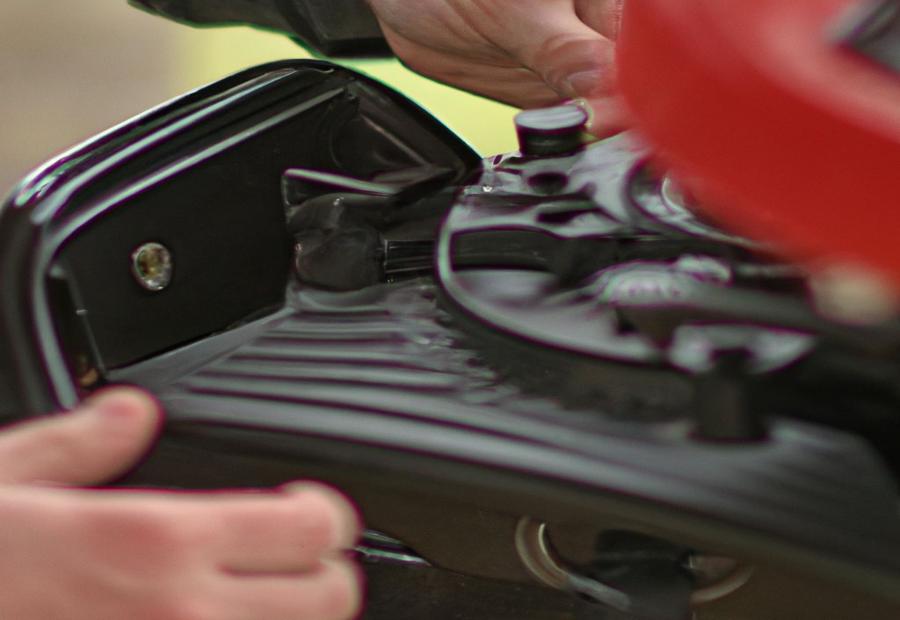
Photo Credits: Gardenerheaven.Com by Carl King
When your lawn mower experiences issues beyond your expertise, it may be time to seek professional help. This section will discuss when to consult a professional for maintenance and repair services. Additionally, we will explore the benefits that professional assistance can provide, ensuring smooth operation and efficient performance for your lawn mower.
When to consult a professional
Consulting a pro for lawn mower issues may be needed when troubleshooting common problems, yet no solution is found. Certain situations require a professional’s expertise and knowledge to fix complex problems effectively. This includes:
- Sputtering persists despite checking fuel, filters, and ignition.
- Extensive damage or wear to carburetor/fuel lines too hard to replace/repair.
- Other potential issues have been fixed, but the mower still won’t work.
- No technical knowledge or experience to repair the mower.
- Time constraints prevent thorough troubleshooting or DIY repair.
- Local guidelines or requirements that call for professional maintenance/repair.
Consulting a pro has various benefits in dealing with sputtering. They have knowledge and experience, specialized tools/equipment, and can provide expert advice on proper maintenance. It ensures any underlying issues are addressed, saving time and money. It also provides peace of mind knowing the machine was repaired correctly.
Benefits of professional maintenance and repair services
Professionals offer a range of benefits regarding mower maintenance and repair. They boast expertise, precision, and time-saving solutions. Plus, warranty preservation and long-term cost savings are yours too! Professional care can even prolong the lifespan of your mower.
Entrust your lawn mower to the pros for better results. Their expertise and special tools make for accurate diagnostics and precise repairs. Time and potential problems are saved. Warranties are preserved. And cost savings and a longer mower lifespan are within reach. Invest in professional maintenance for the smooth operation you want.
Conclusion
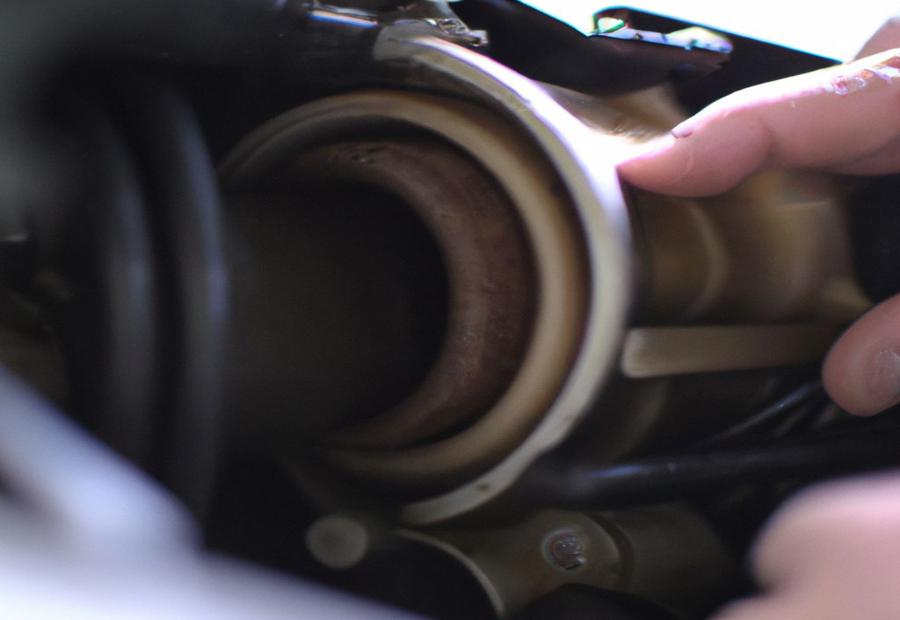
Photo Credits: Gardenerheaven.Com by Arthur Garcia
Sputtering while using a lawn mower is a frustrating issue. However, you can get your mower running smoothly with the right fixes. Here are some suggestions to consider.
- A clogged air filter is one of the most common causes of sputtering. The air filter prevents dirt and debris from entering the engine. It can become clogged over time, restricting airflow and leading to sputtering. Clean or replace the filter to fix this.
- Contaminated fuel can also cause sputtering. Dirt and debris can accumulate in the fuel tank, leading to clogged fuel lines and an inefficient engine. Drain the old fuel and replace it with fresh, clean fuel. Adding a fuel stabilizer helps prevent fuel contamination.
- Worn-out or dirty spark plugs can also cause sputtering. The spark plug ignites the fuel-air mixture in the engine. If it’s not working properly, it can lead to uneven combustion and sputtering. Check and clean or replace the spark plug to resolve the issue.
Some Facts About “Lawn Mower Sputtering?”:
- ✅ Lawn mower sputtering is a common issue caused by lack of maintenance and various factors such as dirty air filters, clogged fuel lines, and worn spark plugs. (Sources: Team Research, TheLawnMowingKing, LawnChick, FreePlants, AftonVilla)
- ✅ Dirty or clogged air filters can restrict the flow of air into the carburetor and cause sputtering. They should be cleaned or replaced regularly. (Sources: Team Research, TheLawnMowingKing, LawnChick, FreePlants)
- ✅ Issues with the fuel system, including clogged fuel filters and bad fuel, can lead to lawn mower sputtering. Regular cleaning or replacement of fuel filters and using high-quality fuel can help resolve this problem. (Sources: Team Research, TheLawnMowingKing, FreePlants)
- ✅ Carburetor problems, such as dirt and debris buildup, can cause sputtering. Regular cleaning or adjustment of the carburetor can improve the air and fuel mixture, ensuring smooth operation. (Sources: Team Research, TheLawnMowingKing, LawnChick, FreePlants)
- ✅ A faulty or dirty spark plug can lead to misfires and sputtering. The spark plug should be cleaned or replaced to ensure proper ignition and combustion. (Sources: Team Research, TheLawnMowingKing, LawnChick, FreePlants)
FAQs about Lawn Mower Sputtering
Question 1: What are some common causes of lawn mower sputtering?
Answer: Some common causes of lawn mower sputtering include using old or the wrong fuel, clogged or dirty air filters, dirty fuel filters, a bad gas cap, a dirty carburetor, water in the fuel tank or line, a faulty spark plug, or issues with the carburetor.
Question 2: How can I fix sputtering caused by old or low-quality fuel?
Answer: To fix sputtering caused by old or low-quality fuel, it is recommended to use ethanol-free gas or “4-cycle-tru-fuel” for better mower performance. Replace the old fuel with new fuel and avoid using fuel with a high ethanol content.
Question 3: What should I do if my lawn mower has a dirty air filter causing sputtering?
Answer: If your lawn mower has a dirty air filter causing sputtering, you should clean or replace the air filter accordingly. Regularly checking and cleaning the air filter ensures proper airflow and prevents sputtering.
Question 4: How can a dirty carburetor contribute to lawn mower sputtering?
Answer: A dirty carburetor can cause a lawn mower to sputter by obstructing the proper mixture of air and fuel. Cleaning the carburetor bowl, inlet and outlet ports, and fuel lines with a carburetor cleaner can help resolve sputtering issues.
Question 5: Can a faulty spark plug cause a lawn mower to sputter?
Answer: A faulty or dirty spark plug can cause a lawn mower to sputter. It is recommended to clean the spark plug with a wire brush and brake cleaner and replace it if there is a dark, sticky carbon residue.
Question 6: What preventive maintenance practices can help prevent lawn mower sputtering?
Answer: To prevent lawn mower sputtering, it is important to regularly clean or replace air filters, fuel filters, and spark plugs. Additionally, using high-quality fuel, maintaining the carburetor, and keeping the mower and its components clean can contribute to smooth operation. Regular tune-ups and following proper lawn care practices, such as avoiding cutting wet grass or letting the grass grow too high, can also help prevent sputtering.




